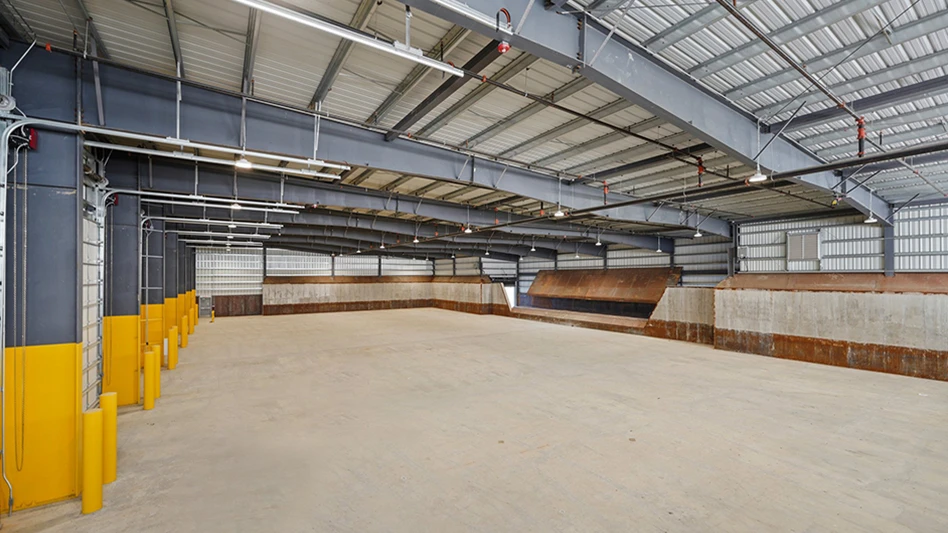
Gautier Willaume | Dreamstime.com
Organizations within recycling and waste management industries continue to face major challenges retaining and recruiting drivers of their transportation fleets at a particularly perilous time, as drivers are needed more than ever to continue transferring the shipment of materials to keep clients happy.
In one particular market, petroleum and liquid tankers are seeing especially difficult employment challenges in finding drivers. According to the National Tank Truck Carriers (NTTC), which represents the tank truck industry before Congress and regulatory agencies, companies that serve these markets are seeing an almost 42 percent reduction in qualified driver applicants dating back to 2019.
NTTC also has estimated between 20 and 25 percent of all tanker trucks are currently not being used because of a lack of qualified drivers.
Driver turnover rates remain inflated
While it would be easy to point to the COVID-19 pandemic as the culprit, the fact remains this has been a growing issue for several years.
For the fourth consecutive year, driver shortage remains the trucking industry’s leading concern on the overall list of challenges and concerns, according to the 2020 American Transportation Research Institute (ATRI) report, "Critical Issues in the Trucking Industry."
Compensation programs are regularly discussed to attract new drivers and retain existing ones. However, recycling- and waste management-based fleets are beginning to apply other strategies for driver recruitment and retention.
Onboarding new drivers can erode the bottom line
Typically, the average cost of onboarding a new driver can exceed $10,000 for many companies. Organizations with fleets therefore have a continuous motivation for retaining their existing drivers to avoid paying a hefty onboarding expense. What they’re now coming to realize is that having drivers operate newer trucks can improve their chances of retention.
Newer trucks come with newer technology, advanced safety features and less maintenance and repair problems, which equates to less downtime and breakdowns on the side of the road. This means drivers can more frequently return home to their families at the end of the day and operate trucks on their routes with more confidence they will avoid breakdowns.
Aside from the costs to recruit drivers, simply not having enough drivers also is eating into bottom-line profits. Companies that focus on recycling and waste management are losing business to owner-operators because they don’t have enough drivers to take jobs.
“We have heard that with the high spot market trucking rates, individual owner-operators are choosing to get their own authority and take loads off the load boards,” says Bob McDowell, president and owner of Houston-based W.M. Dewey & Son Inc. “They keep 100 percent of the load revenue rather than sharing it with a trucking company. That is a bad trend for established trucking companies, which cannot increase their driver/owner-operator count.”
Advanced safety features benefit drivers and fleets
The advanced safety features found in today’s newer trucks are a significant motivating factor for drivers to remain with a particular organization or fleet. Today’s drivers enjoy comfort and safety items such as:
- air ride suspension
- power steering
- automated manual transmission
- engine horsepower and speed settings
- lane departure
- collision mitigation
- adaptive cruise control
- blind spot monitoring
- roll stability
Companies and fleets are realizing a greater return on their investment into newer trucks when more of them are placed into service. In fact, the cost for all safety equipment (including collision avoidance, disc brakes, lane change and electronic stability control) reduces overall collision repairs and yield a return on the original safety technology investment in about 18 months (collision repairs cost avoided). These are substantial savings combined with the cost of onboarding new drivers.
Driver shortage and the retention of drivers was listed as the top two issues being faced by transportation firms according to ATRI's 2021 report. Including drivers in the conversation around safety initiatives and acknowledging their input is important for retention strategies. As more fleets and organizations replace aging trucks with newer, safer equipment on the roads, these companies realize they will keep their drivers and others on the road safer, retain their drivers at a higher rate and also enjoy substantial savings in reduced accident and litigation costs as well as lower maintenance and repair expenditures.
Ultimately, companies are paying closer attention to their overall life cycle cost management strategies in alignment with the need for reduced driver turnover and better safety measures. Refocusing truck acquisition strategies based on economic obsolescence as opposed to functional attrition is now helping industry players preserve bottom-line profit potential.
Katerina Jones is Vice President, Marketing and Business Development at Fleet Advantage, a leading innovator in truck fleet business analytics, equipment financing and lifecycle cost management.
Get curated news on YOUR industry.
Enter your email to receive our newsletters.Latest from Waste Today
- ReMA board to consider changes to residential dual-, single-stream MRF specifications
- Miller Environmental Group Inc. appoints CEO
- DPI acquires Concept Plastics Co.
- Laurel Mountain Capital announces investment in 5280 Waste Solutions
- Cielo investor requests annual meeting
- WIH Resource Group celebrates 20th anniversary
- NWRA: NIOSH cuts a step in the wrong direction
- Valicor Environmental services acquires Affordable Waste Management






